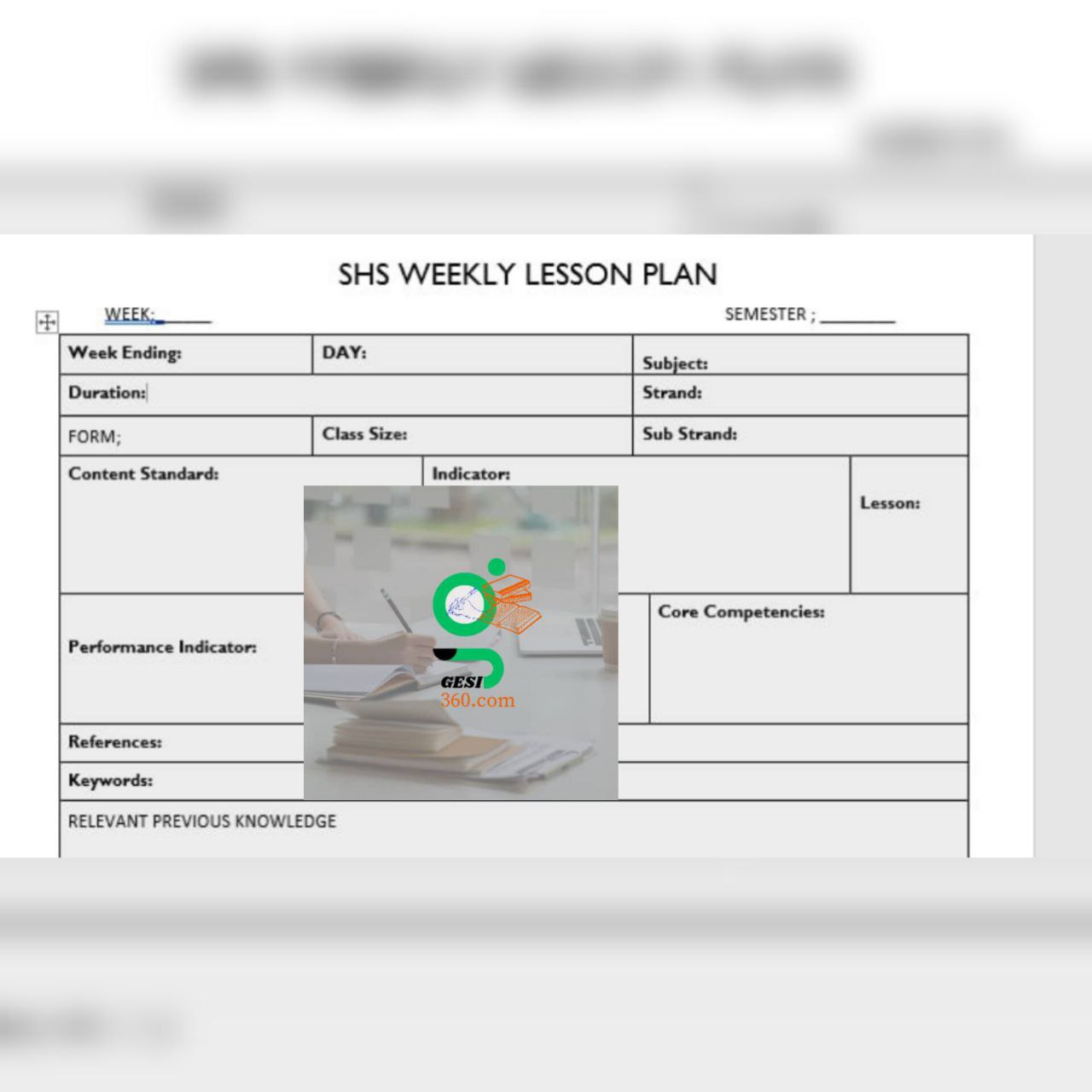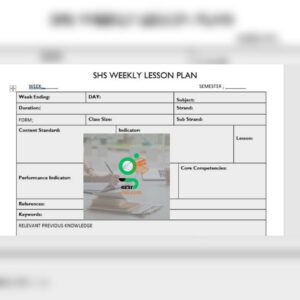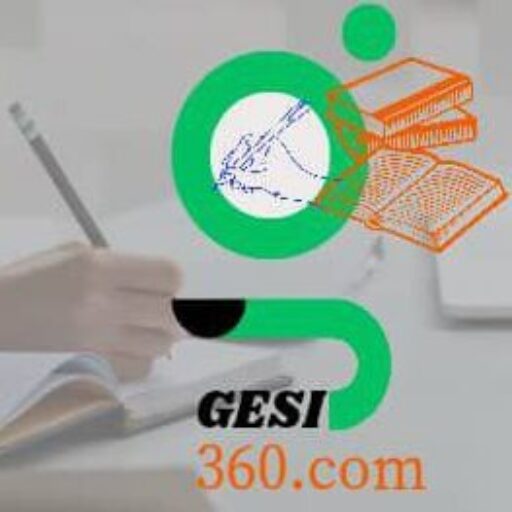SHS New Weekly Lesson Plan Template For the New Curriculum ( GESI,SEL, ICT, 21st Century)
There are many other ways of writing your lesson plan, Note that, an electronic format is also accepted.
There are about 3 different Types you can choose from.
This is SHS Lesson Plan For the New Curriculum, more updates and Prepared subjects will be published soon.
Type 1 Strand Type
WEEKLY LESSON PLAN
Download SHS/SHTS/STEM Learning Planner Week 1 and 2 Biology
Download SHS/SHTS/STEM Learning Planner Week 1 and 2 Physics
Download SHS/SHTS/STEM Learning Planner Week 1 and 2 Chemistry
Download SHS/SHTS/STEM Lesson Planner Week 1 and 2 General Science
Download SHS/SHTS/STEM Learning Planner Week 1 and 2 Business Studies Learning Planner
Download Computing Teacher Manual (Year 1) For SHS/SHTS/STEM Book 1
| Learning Planner | |||||||
| Subject | General science | Week | Duration | 180 min | Form | SHS | |
| Strand | EXPLORING MATERIALS | Sub-Strand | SCIENCE AND MATERIALS IN NATURE | ||||
| Content Standard | Demonstrate knowledge and understanding of the characteristics of science and show how they are applied in everyday life. | ||||||
| Learning Outcome(s) | Evaluate the characteristics of science
|
||||||
| Learning
Indicator(s) |
Design projects using the characteristics of science | ||||||
| Essential Question(s) |
|
||||||
| Pedagogical Strategies | · Collaborative learning
· Demonstration · Project-based learning |
||||||
| Teaching & Learning Resources | · Projectors
· Poster pictures showing scenarios in which the characteristics of science are displayed. (E.g. https://evolution.berkeley.edu/nature-of-science/characteristics-of-science/and https://www.sciencebuddies.org/science-fair-projects/project-ideas/list ) · Internet sources |
||||||
| Key Notes on Differentiation | |||||||
| i. Learning task:
· Identify three steps involved in designing science projects · Describe how to design science-based projects using the characteristics of science. Design a science-based project using characteristics of science · Give an example of designing science-based projects where the characteristics of science can be identified, etc.
ii. Pedagogical Exemplars: · Provide videos, charts, diagrams, and pictures for learners on designing science-based projects using the characteristics of science in nature · In mixed-ability groups, learners discuss the step-by-step science characteristics used in videos, charts, diagrams, and pictures to design the project · Demonstrate how the characteristics of science (empiricism, systematic observation, objectivity, tentativity) are used in designing a project for the learners
iii. Key Assessments (DOK): · Level 2: Describe the characteristics of science when designing a scientific project · Level 3: Identify three characteristics of science and discuss how each can enhance the effectiveness of a scientific project’s design
|
|||||||
| Keywords | Design, application, project, characteristics, etc. | ||||||
| Lesson 1 | ||
| Main Lesson drawing on Concepts, Skills and Competencies to reinforce as in the Subject Teacher Manual | ||
| Teacher Activity | Learner Activity | |
| Starter Activity (10 minutes)
|
||
| Introductory Activity (15minutes)
I.
Activity 1 (40 minutes) I.
Activity 2 (40 minutes) I.
|
Introductory Activity (15minutes)
I.
Activity 1 (40 minutes)
I.
Activity 2 (40 minutes)
I. |
|
| Assessment DoK aligned to the Curriculum and Subject Teacher Manual | ||
| Level 3: Strategic reasoning
|
||
| Lesson Closure
In completing this part, refer to the Essential Questions to check that learning has taken place. |
||
| Activity (15 minutes)
|
||
| Reflection & Remarks | ||
|
|
||
| Lesson 2 | ||
| Main Lesson drawing on Concepts, Skills and Competencies to reinforce as in the Subject Teacher Manual | ||
| Teacher Activity | Learner Activity | |
| Starter Activity (10 minutes)
|
||
| Introductory activity (25 minutes)
I.
Activity 1 (25 minutes) I.
Activity 2 (25 minutes) I.
Activity 3 (25 minutes)
II.
|
Introductory activity (25 minutes)
Activity 1(30 minutes) I.
Activity 2 (25 minutes) I.
Activity 3 (25 minutes) II. |
|
| Assessment DoK aligned to the Curriculum and Subject Teacher Manual | ||
| Level 3: Strategic reasoning
|
||
| Lesson Closure
In completing this part, refer to the Essential Questions to check that learning has taken place. |
||
| Activity (15 minutes)
|
||
| Reflection & Remarks | ||
INTRODUCTION
TASK/ ACTIVITIES
CORE POINTS
REFLECTIONS
EVALUATION
REMARKS
SHS WEEKLY LESSON PLAN Type 2
SEMESTER ;
WEEK; 1 WEEK ENDING;
FORM; SHS DURATION
TOPIC;
SUBTOPIC:
OBJECTIVES;
By the end of the lesson, the learner will be able to;
RELEVANT PREVIOUS KNOWLEDGE (RPK):
Learners have seen a mango fall
REFERENCES:
TEACHING AND LEARNING RESOURCES (TLRs):
KEYWORDS:
CORE COMPETENCIES:
INTRODUCTION:
TASK/ACTIVITIES:
CORE POINTS
LESSON CLOSURE;
REFLECTION/ REMARKS
SHS WEEKLY LESSON PLAN Type 3
SEMESTER; _____
WEEK; _________ WEEK ENDING; ____________
FORM; SHS _____ DURATION________________
STRAND;
SUB-STRAND:
CONTENT STANDARD;
LEARNING OUTCOMES;
LEARNING INDICATORS(S);
By the end of the lesson, the learner will be able to;
RELEVANT PREVIOUS KNOWLEDGE (RPK):
REFERENCES:
TEACHING AND LEARNING RESOURCES (TLRs):
KEYWORDS:
CORE COMPETENCIES:
STARTER ;
TASK/ACTIVITIES:
CORE POINTS ;
LESSON CLOSURE;
REFLECTION /REMARKS;
Any which one you want is okay, Your Assistant Head Academics will communicate the one to use.
For explanation on how to create, check our YouTube channel.
More Prepared lesson plans to come soon.
Source;gesi360.com


